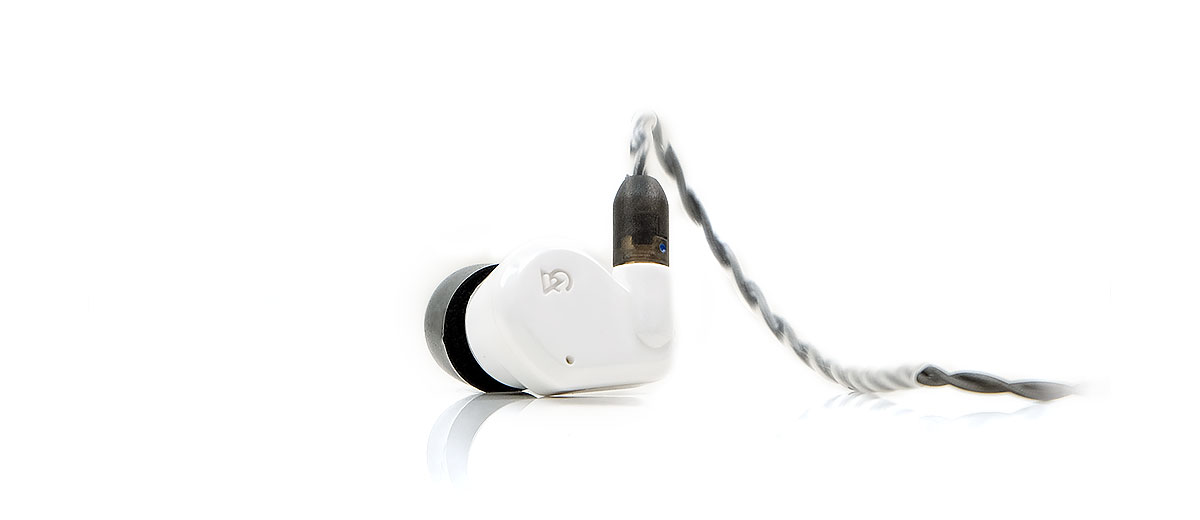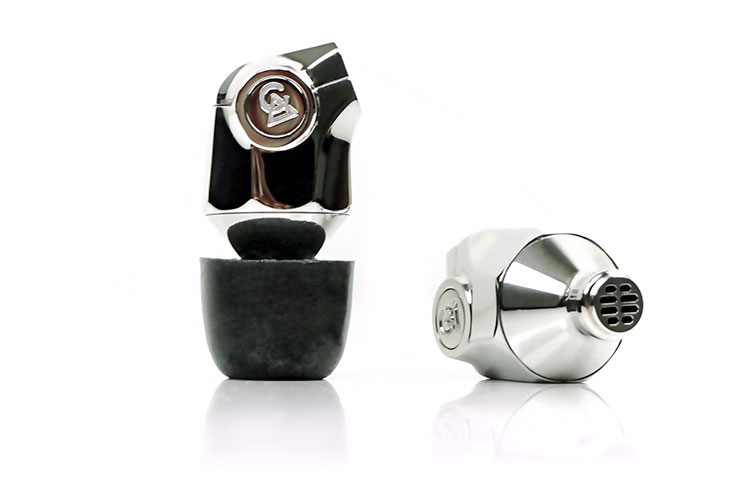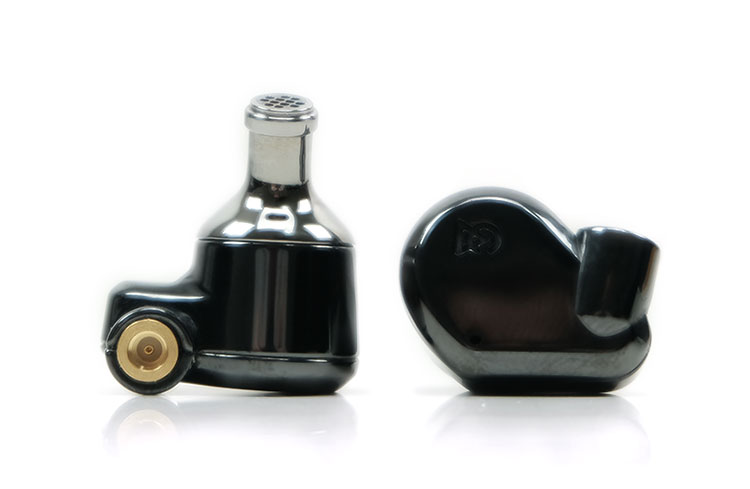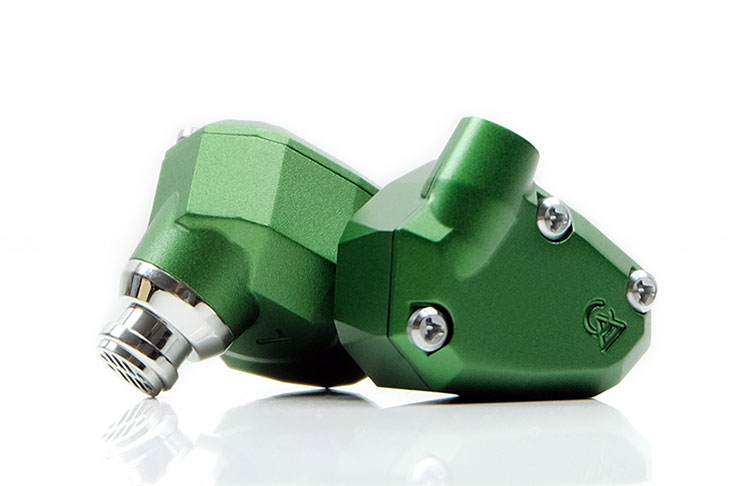Sound Impressions
Summary
For those wondering, the Vega 2020 still retains that big beastly bass bias, remaining relatively V-shaped but with an interesting treble fade compared to the original Vega which was, (and still is), a lot peppier from 5k onwards.
It is that treble re-tune that dramatically changes the Vega 2020 presentation. Instead of a wall of low-end physicality complemented by clean but slightly thinner mids and treble, you now have a smooth, warm, and full-bodied sound from top to bottom.
It bears a closer resemblance to the smoother Atlas low-end but now with an even more liquid-like instrumental and vocal tone.
Vocals lack the harder edges of the original, percussion is full but smoothly delivered, and lower pitching instruments have that classic dynamic driver texture and power when called upon. Certainly, no loss of fun but now much more forgiving.
Of course, the treble fade post-5-7k means some of that original Vega treble articulation and energy takes a back seat so it does lack a little comparative headroom and some will argue it has a slightly darker tone as a result.
However, this top-end fade feels like a deliberate move from Campfire. By retaining the signature bass bombs but at the same time introducing a more relaxing upper range the Vega 2020 offers a degree of flexibility for genres that may not have worked so well with the original.
I would also say the Final E tips are the way to go with the Vega 2020. I found the foam tips to be a little too warm and cast a tiny bit of veil on the mids whereas the Final E tips teased out a little more air and separation in the upper mids and treble producing a more vivid performance of the two.
Timbre
This is where the Vega 2020 took me most by surprise. Yes, I was expecting that heavyweight sub-bass power and V-shaped response curve but the degree of warmth heightened by the treble fade brought a different coloration to the Vega 2020 timbre.
You still get the power with a decided sub-bass bias which holds its course right up to around 100-200Hz, and you still get the steep dip into the lower-mids for separation.
However, that power brings some warmth now into the mids timbre creating a much more rounded tone and even-harmonic bias in instrumental and vocal notes.
The resulting tuning for mids instrument and vocals timbre is now euphonic, creamy, and smooth whereas previously the Vega offered a sharper contrasting signature. Yes, the original will sound the cleaner but at times, though not always, a little on the edgier side.
Percussion Timbre
I just want to return to the FR on the Vega 2020 mids and treble because whilst I mentioned it does not quite have the same headroom as the original Vega 2020, the tuning here actually does help tease out a little more of a natural overtone in percussion work that sits firmly in that 4-7k range. I tend to find this works better for a lot of heavy rock tracks than the original.
For example, I am a big fan of using Five Finger Death Punch’s ‘Fake’ from their 2018 album, And Justice For None for testing percussion harmonics because it is incredibly energetic.
With a cold or even remotely edgy-sounding monitor, it can be overpowering and distract from Zoltan Bathory’s incredible rhythm guitar chord crunching.
Not so with the Vega 2020 which has this bump from 2k to around 5-6k that brings out percussion presence nicely on this track but none of the annoying ring and sharpness from an overindulgent treble mix.
Sometimes this track has a ton of power and meat that comes out very well with hybrids but can also thin out the hi-hat and cymbal crashes creating a nasty harmonic resonance. The Vega has none of that sounding powerful but natural at the same time.
Staging
The staging is quite different in the Vega 2020 compared to the original. Both have gut-wrenching depth and a slightly recessed midrange to create a sense of size and space.
However, the Vega 2020 pulls you further down to the mids and bass with a little less air whereas the Vega staging has more emphasis at both extremities.
The Vega 2020 enhanced mid-bass sustain and bloom also bring out a fuller-sounding instrument and male vocal. This seems to give both aspects a perception of a stronger presence even though the positioning is not hugely different.
Female vocals are relatively relaxed in their positioning compared to the original which sounds the more forward of the two monitors.
Percussion also has more presence and bite on the Vega compared to the Vega 2020 with that heightened treble tuning bringing a lot of attention to the upper mids and treble transition.
Synergy
Efficiency
The Vega 2020 uses Campfire Audio’s new specification system for SPL which we now have a fairly decent collection from them with similar ratings to give you some quick and easy answers.
The impedance measuring system is unchanged but the Vega 2020 is a little more resistive than the original at 36Ω compared to 17.5Ω. That does not play any sort of major role in the Vega 2020 efficiency and in fact, it is easier to drive compared to the Vega, especially in terms of current.
The new SPL rating of the Vega 2020 is listed at 19.86 mVrms to attain 94dB SPL with a 1kHz weighting. Compared to the Andromeda 2020 at 7.01 mVrms you can see there is a bit of a difference in terms of efficiency.
The Andromeda 2020 is much more efficient with its all-BA setup and the Vega 2020 10mm dynamic driver does need more power to sound optimal.
However, the older Vega needs more current, at least 2-3dB more with our Lotoo PAW Gold Touch and HiBy R8 test DAPs showing about 5-6 steps difference in low gain unbalanced volume between the two. The Vega is rated at 102dB SPL but this is closer to the Atlas at 105dB SPL.
That also means higher noise floors will be no problem for the Vega and you should not expect to hear too much hiss in the background if any. Certainly not on the HiBy R8.
Pairing
Your source does play a fairly critical role in how optimal the Vega 2020 sounds, both in dynamic range and timbre.
I found that weaker sources such as smartphone jacks from the likes of the Asus Rog Phone 3 spat out a brighter tone on the Vega 2020 but lacked the composure and dynamic range at the same time. You still got plenty of bounce on the low-end but it sounded a bit rougher and compressed. The term I would use is brittle and edgy.
The more power I threw at the Vega 2020 the more refined and smoother it sounded. In some ways that is a legacy trait of the original Vega also to be frank you do not need a desktop amplifier to get the Vega 2020 moving.
Instead, a quality DAP with a good output rating such as the N3Pro, DX160 right up to the HiBy R8, Lotoo PAW Gold Touch, and the LP P6 will dramatically increase the dynamic range performance of the Vega 2020.
Going balanced with an aftermarket cable will also significantly improve channel separation and offer a bit more space and clarity in the mids.
Once you have that dynamic range optimal the Vega 2020 sounds snappier, richer, and with more ‘drive’ or power.
Timbre Tweaking
The rest is timbre preferences and there is some merit here in twiddling with PMEQ because I tended to find a clean DAP such as the FiiO M15 to tease out some generous and well-balanced treble but at the slight cost of bass impact which is where you want the Vega 2020 to perform.
You can go with smoother more liquid and weightier signatures like the P6 from Luxury & Precision or the HiBY R5/R8 but here I would suggest playing around with a bit of EQ or PMEQ, (iBasso DX220 Max and the Lotoo PAW Gold Touch), and see if you can tease out a little more treble presence with these sources.
The payoff is excellent. With a Q Factor of 0.3 for a gentler rise and fall around 6-10k, the Vega 2020 responded well on the Lotoo PAW Gold Touch. That means those of you who might want some more sparkle up top can grab a slice without upsetting the lower-range timbre too much.
With a graphical EQ, you can do the same around 8k with approximately 2-3dB boosting but it is not quite as precise for me as the gentler PMEQ solution.
Select Comparisons
Testing was completed with stock cables, stock foam tips, and a Lotoo PAW Gold Touch DAP using FLAC 16BIT and 24BIT tracks.
Campfire Audio Atlas
$699 (SRP $1299)
Technical
I tend to think of the Atlas as the Vega 1.5 and in some ways a bit of an outlier in that its unique design was only used one more time via the excellent entry-level Comet before it got the ‘chop-chop’. By that I mean the stainless-steel nozzle and striking grill design of the Atlas are now used on all new Campfire IEMs.
Like the Vega 2020, the Atlas uses a larger 10mm dynamic driver with Campfire’s signature A.D.L.C. (amorphous diamond-like carbon) coating material on the diaphragm.
Its configuration is a little easier on paper at 19Ω however we think the SPL performance of these two are very close and both are easier to drive than the original Vega.
The Vega 2020 is rated at 19.86 mVrms to achieve 94 dBSPL@1kHz whereas the Atlas uses the traditional mW rating at 105dB SPL. I would say based on our testing the Vega 2020 is just marginally less efficient than the Atlas and around 102-105dB SPL.
Design
There is a huge difference in form factor, function, and aesthetics between these two monitors. The Atlas goes back to day 1 with the original Lyra curved small form factor, ceramic polished white, and the stainless-steel nozzle shared by the Atlas.
That nozzle is the only thing the Atlas shares with its high-impact chrome bullet-type form factor, channel-agnostic wiring, and the ability to wear straight down or over the ear.
Both are comfortable in the ear and the tip range is the same so the isolation is quite similar for me. The Atlas does give that additional wearing flexibility but the Vega 2020 shape allows it to be a bit more secure in the ear.
The two monitors use MMCX and Litz cables though the Atlas uses the older MMCX connector shape and the Litz is a 4-core pure Silver Litz cable compared to the SPC Litz -4 core with the Vega 2020.
Performance
The tuning differences between these two centers on the degree of a dip in the lower-mids combined with the amount of treble emphasis.
Both are colored, biasing more to a V-shaped response curve but the Atlas is decidedly classic V with an aggressive lower-mids suck out and more treble emphasis around 5-6k and beyond around 8-10k.
The Vega 2020 sees a very different treble tuning with a fade beyond 5-7k that relaxes the treble presence and more of an emphasis around 1-2k.
The Atlas also starts its rise around 1-2k but because of the solid bass and treble emphasis, once those two ends of the spectrum get busy they tend to overwhelm the mids a bit more than the Vega 2020.
The Vega 2020 also has a strong bass response that I find marginally better balanced compared to the Atlas which tends to just get a bit bloomy and that helps with mids presence a lot when it gets energetic.
The resulting sound from the Atlas’s high contrast approach is a midrange that is a little less dense, perhaps a bit thinner or cleaner but not quite as rich or smooth as the Vega 2020 midrange.
That additional Atlas treble sparkle also introduces more odd-harmonic influences so percussion and vocal work has a bit more clarity but also a bit more sibilance.
The Vega 2020 has less vocal sibilance and a warmer even-harmonic timbre overall. Percussion has less of a sharp edge to it it and is quite smooth with less presence and bite but not as airy or with less headroom up and onwards.
Campfire Audio Dorado 2020
$1099
Technical
The Dorado 2020 is an update on the original that we reviewed back in early 2017 and we will have a full review of that coming soon. In some ways, I view the Dorado 2020 as the JNR Solaris being a hybrid dynamic driver/BA design.
Also, in some ways, it is a Vega 2020 ‘+1″ as it also uses the same A.D.L.C. 10mm dynamic driver for the lows and mids.
However, while the size and diaphragm materials are the same, the drivers have different faceplates and windings to achieve their different performances. The plus one in the Dorado 2020 is the BA driver in the actual nozzle near the exit for some additional presence.
Neither monitor uses any crossover technology though a single dynamic driver Vega 2020 hardly needs it. Nor do they have any ‘Solid-Body” or 3D optimization.
Both the Vega 2020 and the Dorado 2020 now have similar performance specs so we can directly compare. The Dorado 2020 is rated at 10Ω and needs 18.52mVrms to hit 94dB SPL @1kHz. This compares to the Vega 2020 which is rated at a higher 36Ω and requires a bit more power at 19.86mVrms to achieve 94 dBSPL@1kHz.
You will not hear much of a current gap between either and volume adjustments are very marginal to match. Both are relatively easy to drive though good power will optimize performance and tighten the low end compared to weaker outputs. Neither are overly sensitive to hiss.
Design
Both the Vega 2020 and the Dorado 2020 have gone through very similar design enhancements. Both retain their original form factor but like the Vega 2020, the Dorado 2020 is slightly bigger and taller due to the use of the new nozzle design and having to accommodate that larger 10mm dynamic driver inside.
The materials on both are ceramic though the coloration on the Dorado 2020 is a gunmetal finish compared to the pristine white of the Vega 2020. The stainless-steel nozzle is also a little more muted or greyish on the Dorado 2020 compared to the shine of the Vega 2020 nozzle.
Aside from that the comfort and isolation levels are the same, both MMCX connectors are the latest round versions and both also offer the 4-core SPC Litz smokey jacket detachable cables.
Performance
Both of these monitors are going for the ‘fun factor’ with an exaggerated but powerful low-end. However, the first thing that is going to leap out in terms of differences is the BA driver in the Dorado 2020.
First, it introduces a bit more extension and treble presence on the Dorado 2020 which balanced quite nicely with the power and warmth from the low-end. The second is the added dimension of BA texture with its faster articulation and precise imaging but also a slightly thinner sounding and colder timbre.
The Vega 2020 sounds quite different even though that dynamic driver is the same. The low-end has a bit more bloom and quantity with a slightly slower or longer decay. It sounds denser but warmer with a bit more heft right at the sub-bass level. There is less of a mid-bass punch compared to the Dorado 2020 also.
The Vega 2020 treble is also noticeably more relaxed compared to the Dorado 2020’s BA-infused treble energy. Combine that with the slightly cooler low-end and you get a different harmonic balance in the mids.
The Vega 2020 mids are smooth, and liquid but slightly rounded with a little less outright vocal presence. The Dorado 2020 is a cleaner sound with a bit more treble infusion producing a crisper tone to both instruments and vocal performances.
You could argue that the Vega 2020 has a darker-sounding appeal or a smoother more liquid tone from top to bottom. Whereas the Dorado has a punchier higher-contrast energetic style with a cleaner mids and treble response.
Campfire Audio Andromeda 2020
$1099
Technical
The Andromeda 2020 is the latest revision of their all-time classic all-BA universal monitor. A very different proposition with 5 BA drivers using a T.A.E.C. configuration of 2 for the highs, one balanced armature for the mids, and 2 for the lows compared to that single 10mm A.L.D.C. dynamic driver inside the Vega 2020.
One thing I noticed not mentioned with the Vega 2020 is the internal acoustic layout so I presume CA has decided not to use their new ‘Solid-body” 3D printed internal acoustical chamber design, something which the Andromeda 2020 has.
The second difference is the optimized 3D construction used in conjunction with the Solid-Body process, also a feature of the Andromeda 2020 but not in the Vega 2020.
We can draw a simple configuration spec comparison between these two as they use the same Vrms and impedance methodology. The Andromeda 2020 is rated at 7.01mVrms to achieve 94dB SPL @1kHz whereas the Vega 2020 requires 19.86mVrms to achieve 94 dBSPL@1kHz.
That means the Vega 2020 is less efficient compared to the Andromeda and does need a bit more power though most Campfire fans will not be surprised in the least by that observation.
It does mean the Andromeda 2020 is more hiss prone to higher noise floors whereas the Vega 2020 will give you a black background on the same sources.
Design
This is the Gen 1 design versus the Gen 2 design. The Andromeda 2020 uses perhaps the most debatable of the 4 house designs used by Campfire in terms of overall comfort. This is the classic angular anodized emerald green form factor but with the same stainless-steel nozzle used by the Vega 2020.
The Andromeda 2020 is marginally bigger than the Vega 2020 but not hugely so with more of an emphasis on width and those angular cuts on the edging drawing our attention a bit more in the ear.
The Vega 2020 is definitely smoother and more comfortable in the ear. However, the Andromeda 2020 is all BA meaning no bass vent offering superior isolation.
Both use the latest MMCX connectors and that black smokey jacketed 4-core 1.m SPC Litz cable.
Performance
The Andromeda 2020 follows a slightly gentler U-shaped response curve compared to the Vega 2020 more muscular V-shaped tuning. It has far less bass weight and physicality with that BA texture fairly obvious compared to the gritter and slightly slower sound of the Vega 2020 10mm dynamic driver.
If you need a heavy-weighted low-end then the Vega 2020 is going to give you plenty though I find the Andromeda 2020’s bass response over the original more satisfying. What the Andromeda lacks in pure power and texture on the low end it makes up for it with slightly better control and articulation on its low-end.
On the flip side, the treble extension of the Andromeda 2020 is much better than the Vega 2020. You get plenty of energy up to 10k and a natural tone also with a more coherent and smoother tuning than the original Andromeda.
By contrast, the Vega 2020 is quite relaxed beyond 5-7k so it lacks the same sparkle and headroom.
Mids are clearer, more articulate, and faster sounding on the Andromeda 2020, It can pull from the excellent treble top end and a nice balance of mid-bass warmth on the low end to produce a very natural harmonic balance and engaging tone.
The Vega 2020 mids are more rounded, and denser, but more powerful sounding, particularly on the lower mids.
Vocals have more body but also sound more even-harmonic biased and positioned a little further back compared to the Andromeda 2020 imaging. Percussion strikes have an earthy weightier timbral coloration but not quite as clean or as focused.
Overall, the Vega 2020 is much more powerful sounding and the better choice for dense EDM and some rock tracks but the Andromeda 2020 has more of a hi-fidelity detail-orientated performance and a greater level of flexibility for a wider genre range.
Our Verdict
The Vega 2020 for me is something new, not revised, or tweaked, but a fresh sound and a tuning that I think is more sure-footed in terms of how Campfire wants to stamp a unique performance on each monitor they sell.
What does that mean? Well, having heard the Dorado 2020, I can understand why the Vega 2020 has gone for a weighty smooth tone because to some extent the Dorado 2020 might be closer to the classic Vega treble in terms of energy.
The Vega 2020 is going its own way and that is cool because now I can look at each IEM they sell and I remember exactly how each one sounds.
In this day and age when we are washed over with tons of choices, a memorable sound is critical, one that you can easily describe when someone mentions the name. A rich and powerful bass response and a smooth euphonic mids and vocal timbre are very easy key points to remember regarding the Vega 2020.
Campfire Audio Vega 2020 Specifications
- 5 Hz – 20 kHz Frequency Response
- 94 dB SPL @ 1kHz: 19.86 mVrms
- 36 Ohm @ 1kHz Impedance






